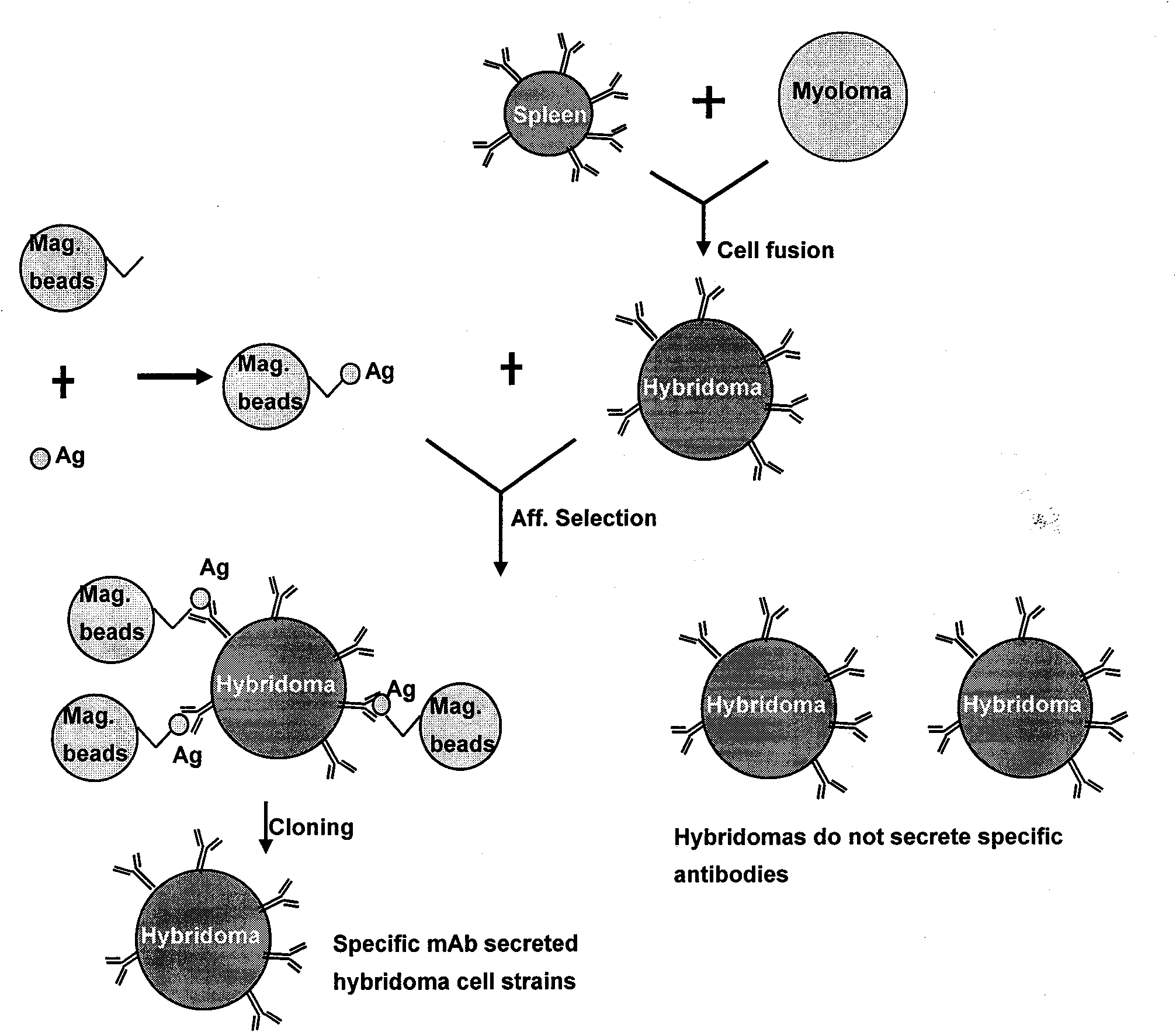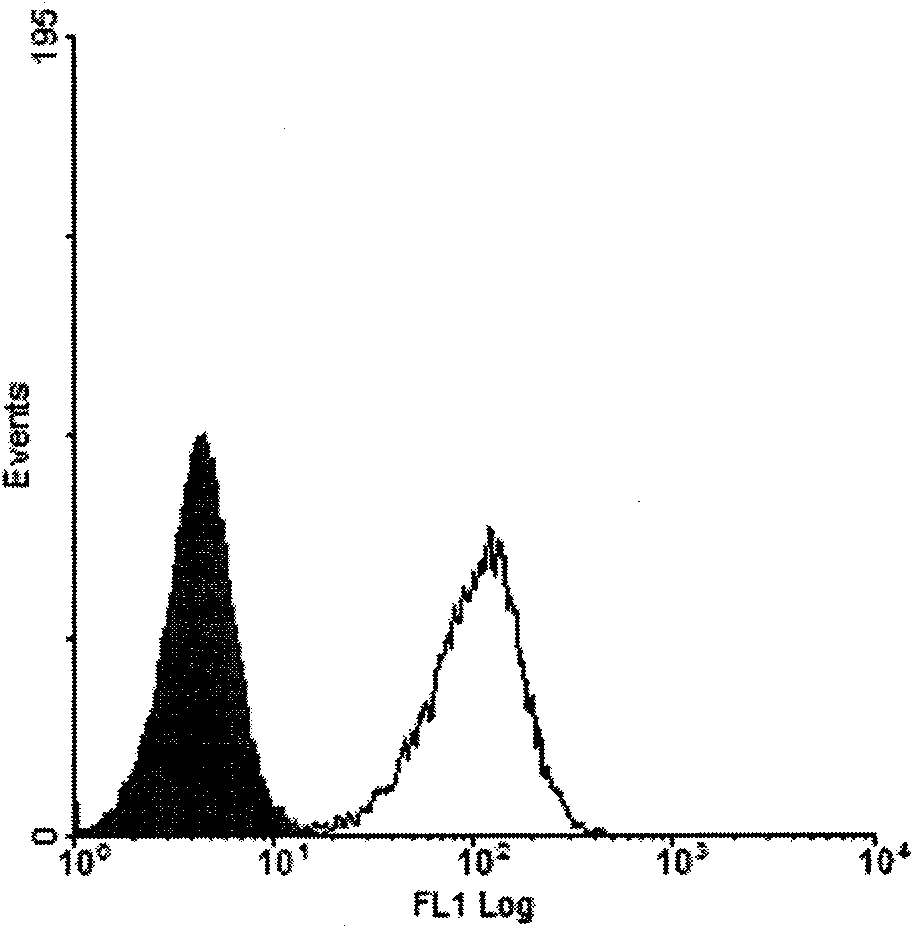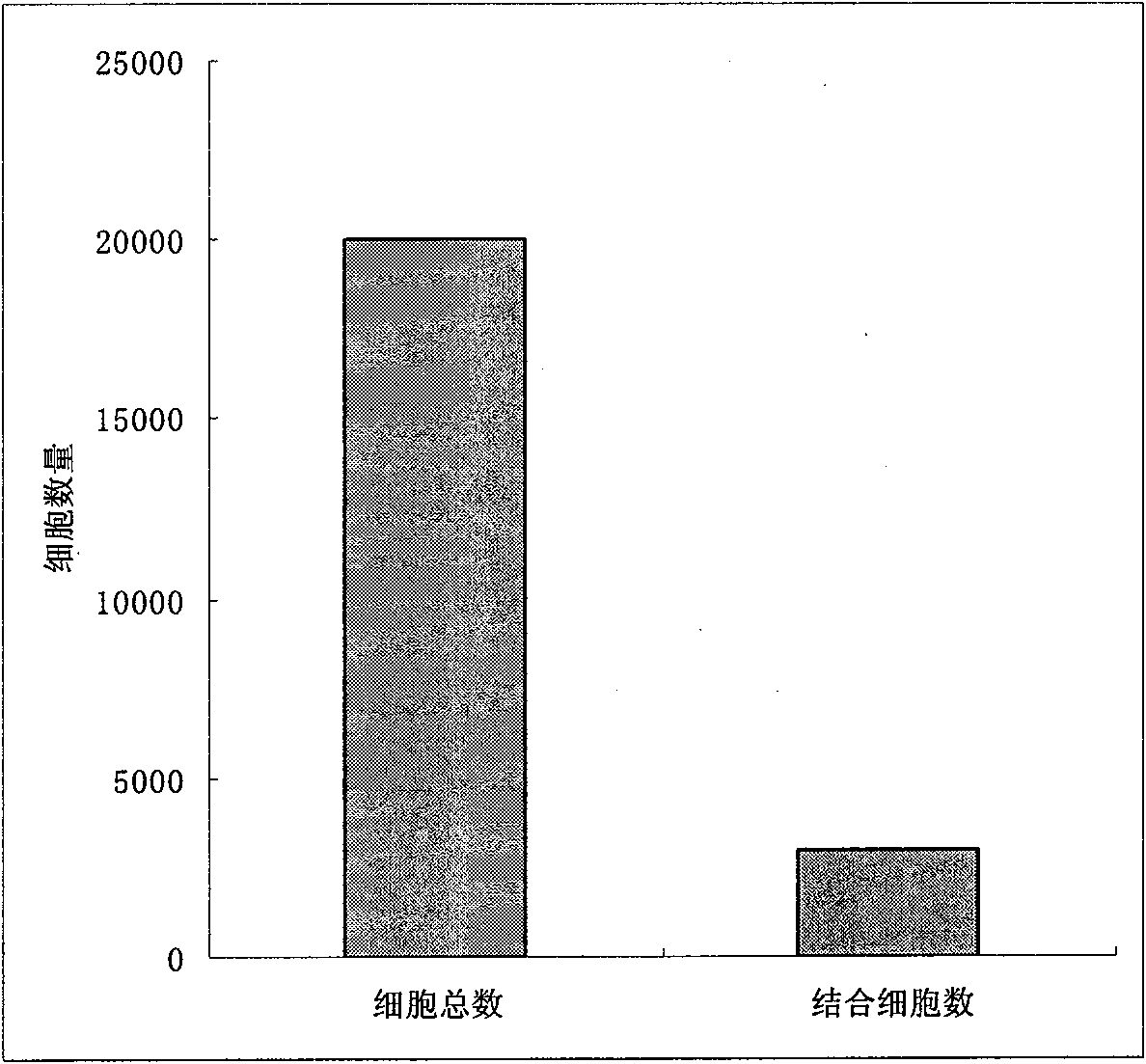Method for improving screening efficiency of hybridoma
A technology for screening efficiency and hybridoma cells, which is applied in the field of improving hybridoma screening efficiency, and can solve the problems of hybridoma cells losing the ability to secrete specific antibodies, chromosome loss, and loss of chromosomes encoding antibodies, etc.
- Summary
- Abstract
- Description
- Claims
- Application Information
AI Technical Summary
Problems solved by technology
Method used
Image
Examples
Embodiment 1
[0027] Embodiment 1 prepares and identifies the method for the monoclonal antibody of anti-human serum albumin
[0028] This example aims to take the monoclonal antibody against human serum albumin as an example, and describe the practical applicability of the method of the present invention by way of example. The inventors established methods for producing and characterizing anti-human serum albumin monoclonal antibodies.
[0029] 1) Preparation of antigen-coupled magnetic solid phase material:
[0030] Preparation of required reagents and buffers: a) Phosphate buffer saline (PBS): 20mM sodium phosphate, 0.15M NaCl, pH 7.2, coupling reagent: 2) 5mM BS3 (Pierce product, Product No.21580) in PBS, 3 ) stop solution: 1M Tris, pH 7.5, 4) magnetic beads (Pierce product, Product No.21352)
[0031] experimental method:
[0032] Add 1ml of PBS to 1ml of magnetic bead suspension and shake gently, then use a magnetic rack to separate the magnetic beads, absorb the supernatant, and re...
PUM
 Login to View More
Login to View More Abstract
Description
Claims
Application Information
 Login to View More
Login to View More - R&D
- Intellectual Property
- Life Sciences
- Materials
- Tech Scout
- Unparalleled Data Quality
- Higher Quality Content
- 60% Fewer Hallucinations
Browse by: Latest US Patents, China's latest patents, Technical Efficacy Thesaurus, Application Domain, Technology Topic, Popular Technical Reports.
© 2025 PatSnap. All rights reserved.Legal|Privacy policy|Modern Slavery Act Transparency Statement|Sitemap|About US| Contact US: help@patsnap.com



